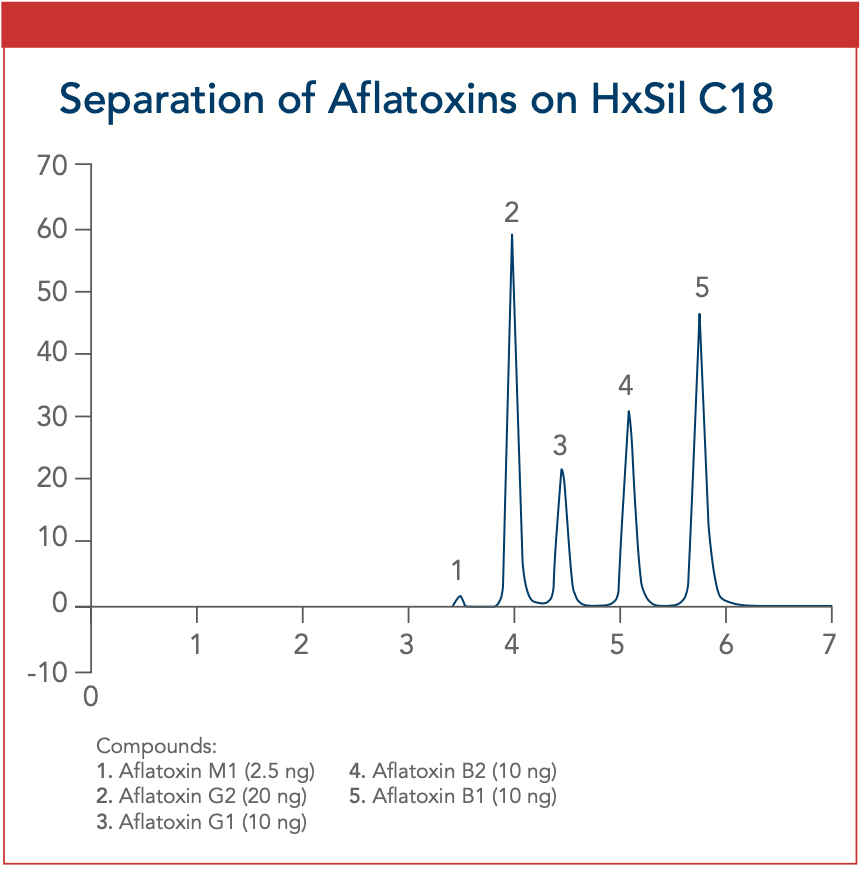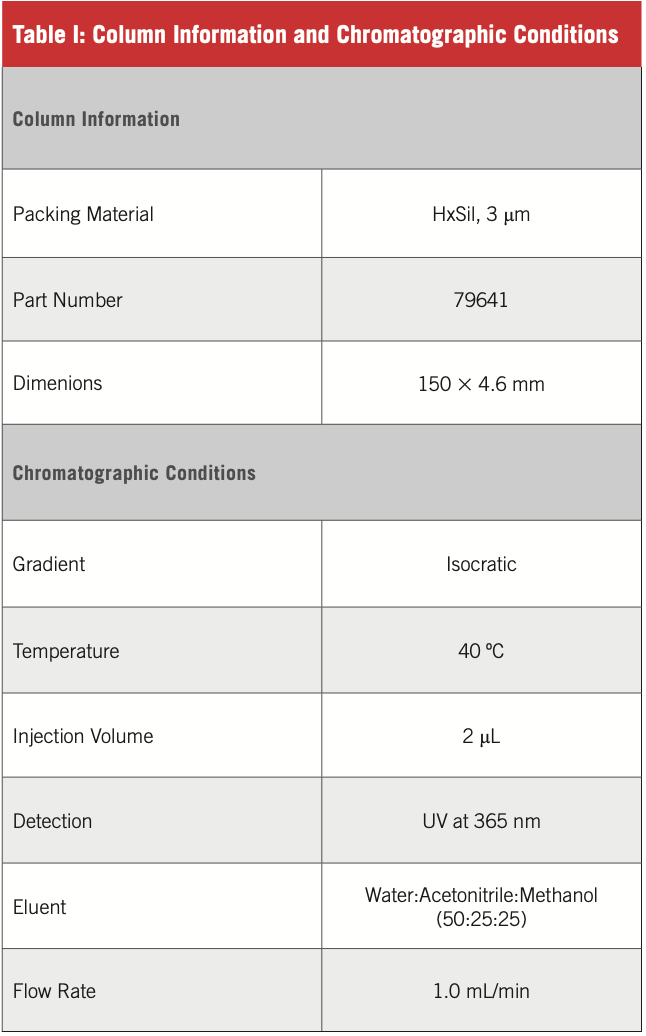Hamilton - Separation of Aflatoxins on HxSil C18
Since the discovery of aflatoxins in 1960, many areas of human food sources have shown considerable propagation of the fungal infection. Although the majority of food samples are cereals, the toxins can be found in a variety of medias, including corn, peanuts, legumes, livestock, milk, and even cannabis, to name a few. The aflatoxins mentioned above are part of approximately 40 secondary metabolites derived from the fungus, Aspergillus flavus. An A. flavus infection can be found in both the pre-harvest and the post-harvest analysis of crops. Analogously, the effects from these metabolites can be either acute or chronic, and have been found to be teratogenic, mutagenic, carcinogenic, immunotoxic, or hepatotoxic in nature. Due to the nature of these attributes, the toxins have been implicated in liver cancer, Reyes syndrome, cirrhosis, and chronic gastritis. As such, the FDA has imposed strict guidelines on the amounts of acceptable aflatoxins present in food, <20 ppb, with even stricter guidelines for milk, at <0.5 ppb.
In this application note, we have developed an HPLC method that isolates five different aflatoxins with the aid of Hamilton’s HxSil-C18 (3 μm) column. The fast isocratic method is completed in under 6 min, and provides excellent resolution between the various aflatoxins. The excellent sensitivity shown in the method affords the analyst a robust, accurate, and affordable product.
Figure 1: Separation of aflatoxins on HxSil C18.



Hamilton Company Inc.
4970 Energy Way. Reno, NV 89502
tel: (775) 858-3000
Website: www.hamiltoncompany.com










